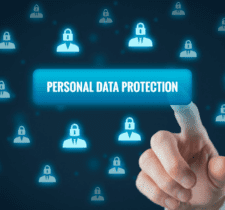The ICO has called on organisations to take action to combat the threat of cyber attacks, providing guidance based on 2023 data breach reports.
In light of the escalating risk of cyber threats, The Information Commissioner’s Office (ICO) is urging all organisations to strengthen their cyber security measures and safeguard the personal data under their care. The threat posed by cyber criminals has become more of a concern, with the advancements of their techniques. As a result, the ICO has issued a stern warning to all organisations to bolster their cyber security measures effectively. The ICO, which has long emphasised the importance of effective cyber security practices, has intensified its efforts to raise awareness and encourage organisations to take proactive steps to protect themselves, in a statement released earlier this month. In this report, the ICO analysed the data breach reports that the organisation received, which included over 3000 breached in 2023, and shared the lessons derived from its analysis.
The report published by the ICO provides practical guidance based on previous data breaches, giving organisations insight into common weaknesses in security measures, which led to data breaches.
According to the ICO, organisations hold a significant responsibility to safeguard the personal data entrusted to them by individuals. This responsibility includes implementing appropriate technical and organisational measures to ensure the confidentiality, integrity, and availability of sensitive data. Failure to do so could result in serious consequences, including financial losses, reputational damage, and legal liability. The report published by the ICO aims to aid organisations in effectively safeguarding the data in their care. With the goal of preventing future data breaches, the “Learning from the Mistakes of Others” report provides practical guidance. It helps organizations gain insight into common security lapses and equips them with straightforward measures to strengthen their security posture. The report outlines the five main causes of cyber security breaches: phishing, brute force attacks, denial of service, errors, and supply chain attacks. It delves into how these attacks occur, offers strategies to mitigate risk, and discusses potential future developments. The report also presents case studies from the organization’s regulatory activities. This information should provide important context on cyber attacks and data breaches, helping organisations to understand how best to avoid them. In addition to the guidance published, the ICO also offers a range of tools and resources to help organisations assess their cyber security risks and develop effective mitigation strategies.
The ICO has included a range of resources to help organisations irrespective of size or sector, in bolstering their security in order to avoid cyber attacks, as well as handling data breaches if they do oocur.
To assist organisations in strengthening their cyber security posture, the ICO, along with the National Cyber Security Centre (NCSC) has provided a range of resources and guidance, for both small businesses and large organisations in the private, public and third sectors. According to Eleanor Fairford, the Deputy Director for Incident Management at the NCSC, “As more organisations report cyber incidents, it is ever-more crucial to have strong online defences to reduce the risk of falling victim and to protect personal information. The NCSC is committed to helping organisations raise their cyber resilience and we urge leaders to make use of the wide range of practical guidance and free services available on the NCSC website. If the worst should happen, we encourage reporting incidents to the authorities to access expert support and help break the cycle of crime.” The ICO asks that organisations report all data breaches as a result of cyber attacks within 72 hours of becoming aware of the incident.
The ICO emphasises the need for a cultivation of a culture of cybersecurity awareness among employees of an organisation, in order to combat the threat of cyber attacks.
The ICO underscores the critical role of employee awareness in enhancing cybersecurity measures. It stresses the need to educate staff about phishing attacks, social engineering techniques, and other tactics employed by cybercriminals. By cultivating a culture of cyber security awareness within the organization, employees can serve as the initial line of defense against cyber threats, complementing technical safeguards. The ICO’s urgent call to action highlights the pressing need for organizations to make cyber security a top priority. With the ever-growing threat of cyber crime, businesses must adopt a proactive approach to protect themselves. Prioritizing cyber security measures not only safeguards an organization from potential attacks but also ensures the security and privacy of customer data. The ICO’s Deputy Commissioner for Regulatory Supervision, Stephen Bonner said “As the data protection regulator, we want to support and empower organisations to get this right. While there is no single solution to prevent cyber attacks, there is absolutely no excuse for not having the foundational controls in place. These are essential to protecting people’s personal information and we will take action, including fines, against organisations that are still not taking simple steps to secure their systems. If you do experience a cyber attack, we always encourage transparency as your mistakes could help another organisation to avoid a similar breach.”





